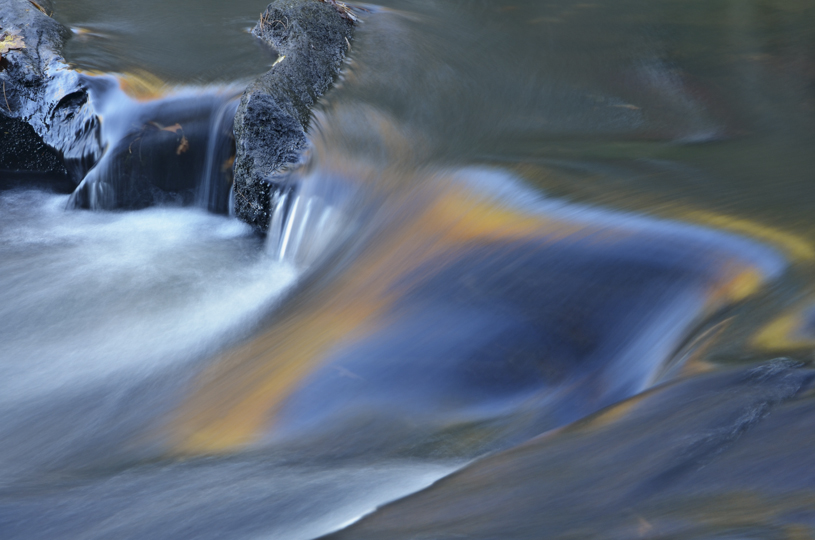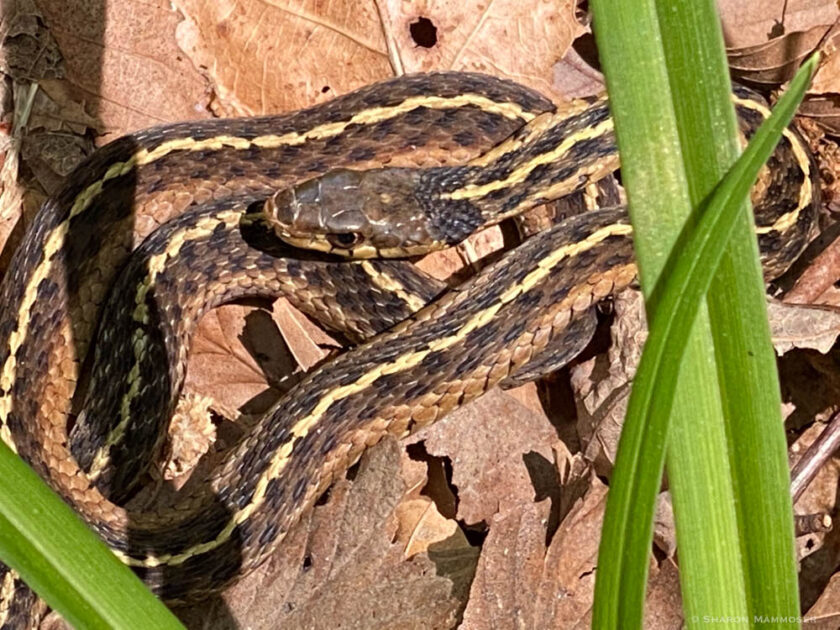Last week’s puzzler was a commonly encountered snake– a common garter snake (Thamnophis sirtalis). There are many subspecies of garter snakes. Many people mistakenly call it a garden snake, which doesn’t seem like a bad name, especially since it IS often seen in the garden. Common garter snakes pose no threat to humans and make great neighbors. They feed on a variety of animals including amphibians, slugs, snails, earthworms, insects, crayfish, small fish and even other snakes. They are also immune to the toxic secretions of toads, able to eat them with no ill effects, as I learned one day when I rounded the bend to find one snacking on the resident toad on my deck. (I’ll refrain from sharing these photos)

If you’ve ever tried to pick up a common garter snake, you probably know about the very foul liquid it can produce. Referred to as musking or skunking, this foul liquid is secreted from the snake’s butt. Its purpose is to make a potential predator drop the snake, thus giving it a chance to escape, unharmed. It’s a great tactic, as I learned many years ago. The very first snake I ever picked up was a garter snake, while I was leading a hike with a group of adults. At the time I knew what the snake was, but I didn’t know about this foul smelling liquid. My hands stunk for the whole rest of the hike, even after I poured water on them and tried to rid myself of this terrible odor. Lesson learned: don’t pick up a garter snake!
Common garter snakes, like many other snakes, have the ability to store sperm. They seem to be able to hold off on getting pregnant until circumstances warrant, or until the female decides it’s time. Garter snakes give live birth (ovoviviparous)–to 12-40 snakes, usually in later summer. Even though the young snakes might stick around Mom for a few hours, she provides no parental care.

Know how common garter snakes spend the winter? Sometimes along with many other snakes, common garter snakes spend the winter dormant in what’s called a hibernaculum, which is an underground space. The same hibernaculum may be used again and again for many years. There is said to be a snake hibernaculum in Canada that houses 8000 snakes each winter! These communal hibernaculums are why you might see more snakes this time of year–sometimes they travel great distances to reach these spots to hibernate.
Okay, let’s stick to the reptile theme for just a little longer… see if you recognize this snake.


